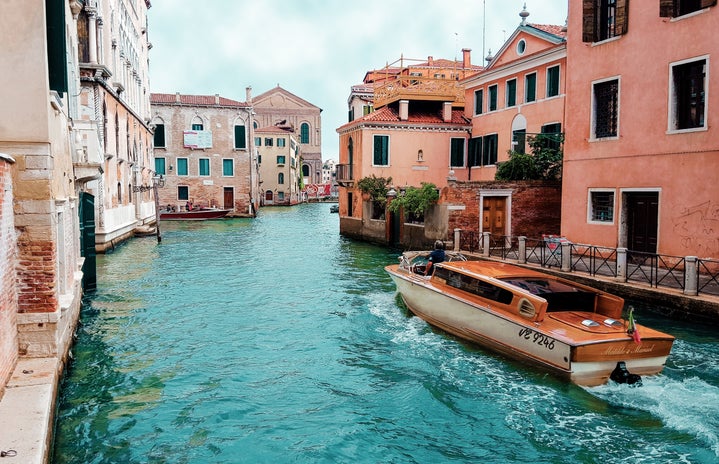This summer, I traveled to some of the most beautiful parts of Italy. It was the most memorable experience, filled with breathtaking views and some of the kindest people I’ve ever met. However, it was also my first international trip without my parents, and figuring out how to navigate such a big trip, much less in a country where you don’t speak the language, can be SO daunting. I had to brush up on the big DOs and DON’Ts of Italian culture. Watching YouTube video after YouTube video of the ways to act, what to order, how to dress and more. I became really curious about all the differences between Italian and American culture. Beatrice Fumagalli is an Italian native currently teaching at Florida State University and finishing her degree here as well. Beatrice is from Bergamo, a part of Northern Italy tucked into the Lombardy region and has lived here, in the United States, for several years. I got the opportunity to pick her brain on some culture shocks and differences she has experienced having lived in both countries and this is what I found out!
It seems that every time you begin learning a language you are taught greetings and introductions and Beatrice’s main culture shock falls right into this category. She says that while in Italy, asking “Come sta?” or “How are you?” is typically met with a passionate answer. One might say that they aren’t doing so well because they’re stressed or haven’t gotten enough sleep. Whereas in America, she has noticed that it is used more as a greeting in passing. This type of cultural difference has caused great confusion and some interesting conversations for Beatrice. She mentions, “You all tend to ask, ‘Hey! How are you?’ but you don’t really want the answer. So when I was walking past people I was trying to answer but they were already walking away!”
One of the most shocking things I learned in this conversation was about the high school structure in Italy. Beatrice mentions that children get to pick the type of high school they wish to attend. “It can be linguistics, sciences, or classics,” she says. According to Scholaro, Italian school types also offer fine arts, and teacher training, as well as technical and professional institutes. Beatrice thought back on her time in high school and noted that while she went to a linguistics high school that focused more on the teaching of languages, she still had math hours and learned science. However, not as much emphasis would be placed on these subjects as there would have been in a science high school. She also mentions that high school completion requires five years whereas the US only requires four.
The age-based milestones in the US, such as being able to drive, or officially becoming an adult are some of the most exciting parts of growing up, but these milestones aren’t the same everywhere and certainly aren’t in Italy! I’m sure you have all heard that kids in Europe can drink significantly earlier than they can in the US, but Beatrice mentions that the law still states that bars and pubs cannot legally serve alcohol to someone under the age of 18. “What about driving?” I asked. In the US you can first drive with an adult at the age of 15, and by yourself at 16, but in Italy, this isn’t the case. “We start driving at 18. You can drive when you’re 16 but only in special cars which are very small and don’t have a powerful engine.” Can you imagine waiting to drive until you’re 18?!
As many European countries tend to have, Italy is no stranger to the lazy American stereotype. However, Beatrice has noticed that she feels her workout routine and lifestyle have changed for the better since living in America. She attributes this partially to the large and easily accessible gyms such as the Leach center on campus. In Italy, she says, “We have gyms… but you have to pay a fee for that, so you’re not really encouraged to go there.” She also mentions that the emphasis placed on sports in the United States is not shared with Italy. “As far as exercise is concerned, I think that here it is way better because you give value to sports. We don’t have university sports. You may have volleyball and basketball teams but not serious ones.”
Anyone interested in Italy or Italian culture is no stranger to the many evening dinner rituals and Beatrice has experienced all of them. She was shocked to find out how early many Americans eat dinner because, in Italy, dinner at six would almost never happen. “In general, we have dinner at 8 or 8:30 and we spend way more time at the dinner table.” After dinner, it is common to have a cup of coffee, and after, they serve something called an “ammazzacaffè” which translates to “kill the coffee.” The ammazzacaffè is a shot of liqueur used to dull the effects of the caffeine (and to keep the dinner party going)! Overall, she explains that long lunches and dinners are because you enjoy the company you keep. “Staying at the table is very important. I always have lunch and dinner with my family.” Awww!
Last, and possibly one of the most shocking things I learned, is that there are laws on what one can and can’t name their child. Firstly, while unisex names such as Logan and Dylan are fairly common in the US this isn’t the case in Italy. With a language revolving largely around gendered objects, unisex names add confusion. “Italian is a language with female and male so it is founded in gender.” The name Andrea for example used to be both a male and female name but according to Beatrice, in 2002 it became strictly male. There is also a rule on naming children something already largely associated with someone else. Beatrice says, “We cannot use character names, or especially the ones that are crucial to our history.” Any characters from movies, television, any media or even history are not permitted.
I now have a very important last tidbit of information for those of you thinking of traveling to Italy. While it is common in the US to get a pizza to share and each person gets maybe two or three slices, this is not done in Italy. Beatrice says, “You want that pizza and the others have their pizzas. But the thing you can do is… exchange a piece of pizza.” So the official and acceptable pizza-sharing technique is ALL about fairness. If you want to try a piece, you can offer one of your own to the other person otherwise, kiss that other pizza goodbye!
The culture shocks experienced after living in one place your whole life and then traveling to an entirely different continent are bound to be significant. Personally, I now know that on my next trip to Italy, I will not share my pizza, expect a 16-year-old to drive, name my kid Joey Tribbiani, or spend less than probably two hours at dinner, but that’s just me. Happy traveling!
Want to see more HCFSU? Be sure to like us on Facebook and follow us on Instagram, Twitter, TikTok, YouTube and Pinterest!


